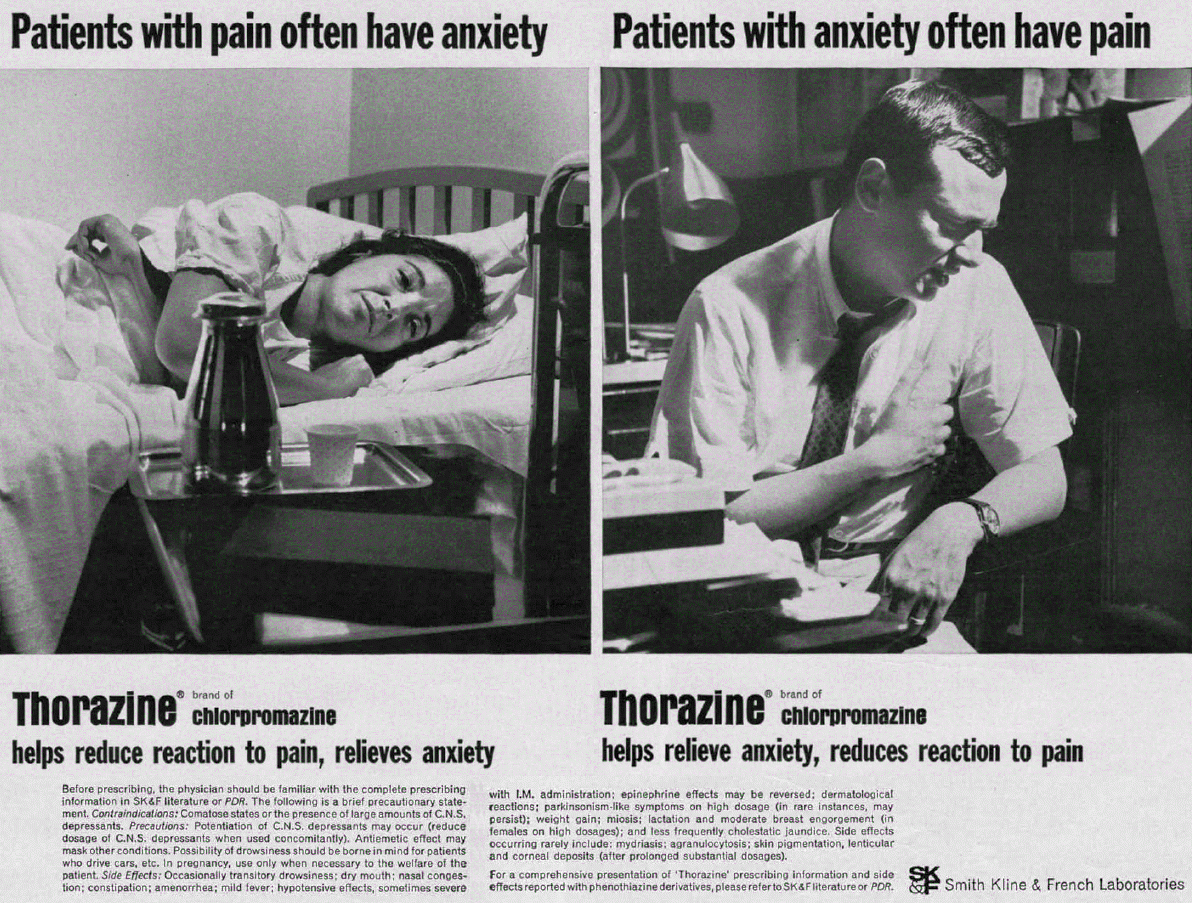

|
|
Thorazine advertisement, 1967. JAMA: The Journal of the American Medical Association, Vol. 199, No. 8, pp. 50-51. Patients with pain often have anxiety ~ Patients with anxiety often have pain Thorazine® brand of chlorpromazine helps reduce reaction to pain, relieves anxiety ~ helps relieve anxiety, reduces reaction to pain Before prescribing, the physician should be familiar with the complete prescribing information in Sk&F literature or PDR. The following is a brief precautionary statement. Contraindications: Comatose states or the presence of large amounts of C.N.S. depressants. Precautions: Potentiation of C.N.S. depressants may occur (reduce dosage of C.N.S. depressants when used concomitantly). Antiemetic effect may mask other conditions. Possibility of drowsiness should be borne in mind for patients who drive cars, etc. In pregnancy, use only when necessary to the welfare of the patient. Side Effects: Occasionally transitory drowsiness; dry mouth; nasal congestion; constipation; amenorrhea; mild fever; hypotensive effects, sometimes sever with I.M. administration; epinephrine effects may be reversed; dermatological reactions; parkinsonism-like symptoms on high dosage (in rare instances, may persist); weight gain; miosis; lactation and moderate breast engorgement (in females on high dosages); and less frequently cholestatic jaundice. Side effects occurring rarely include: mydriasis; agranulocytosis; skin pigmentation, lenticular and corneal deposits (after prolonged substantial dosages). For a comprehensive presentation of 'Thorazine' prescribing information and side effects reported with phenothiazine derivatives, please refer to SK&F literature or PDR. SK&F Smith Kline & French Laboratories |